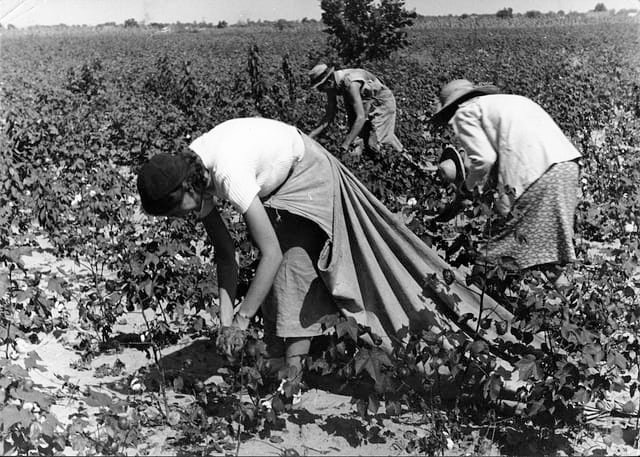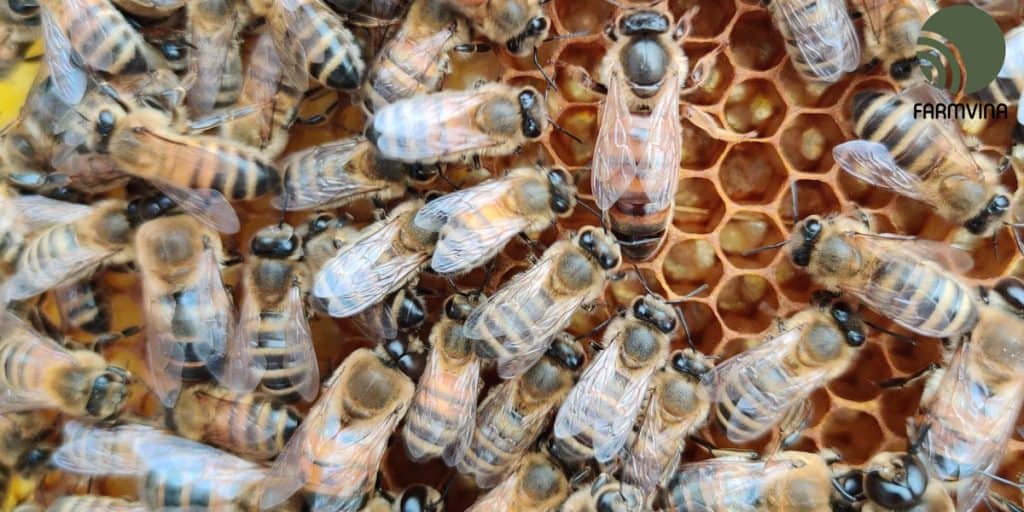Understanding Farm Tenancy
Farm tenancy is a common practice in the agricultural industry, where individuals or organizations lease land from landowners to carry out farming activities. This arrangement allows farmers to access land without the need for large capital investments, while landowners benefit from the income generated by leasing their land.
In this article, we will explore the definition of farm tenancy, the different types of farm tenancy, the advantages and disadvantages of this arrangement, factors to consider when entering a farm tenancy agreement, and the legal considerations involved.
Definition of Farm Tenancy
Farm tenancy refers to the leasing of agricultural land by a tenant farmer from a landowner. The tenant farmer pays rent to the landowner in exchange for the right to use the land for farming purposes.
This arrangement allows individuals or organizations to engage in agricultural activities without the need to own land outright.
Types of Farm Tenancy
There are several types of farm tenancy arrangements, each with its own set of terms and conditions. The three most common types of farm tenancy are fixed cash rent, sharecropping, and crop share rent.
1. Fixed Cash Rent: In this type of tenancy, the tenant farmer pays a fixed amount of cash rent to the landowner. The rent amount remains the same regardless of the crop yield or market conditions. This arrangement provides stability for both parties, as the tenant farmer knows the exact amount of rent to be paid, while the landowner receives a consistent income.
2. Sharecropping: Sharecropping is a form of farm tenancy where the tenant farmer shares a portion of the crop yield with the landowner as rent. The specific share can vary depending on the agreement between the parties. This arrangement allows the tenant farmer to pay rent based on the actual crop production, which can be beneficial in years of high yields. However, it also poses a risk for the tenant farmer in years of poor crop yields.
3. Crop Share Rent: Crop share rent is similar to sharecropping, but instead of sharing a portion of the crop yield, the tenant farmer pays rent by providing a specific quantity of the harvested crop to the landowner. This arrangement allows the tenant farmer to pay rent in kind, which can be advantageous if the market price of the crop is high. However, it also requires the tenant farmer to have the necessary storage and transportation facilities for the harvested crop.
Advantages of Farm Tenancy
Farm tenancy offers several advantages for both tenant farmers and landowners. Here are some of the key benefits:
– Access to Land: Farm tenancy allows individuals or organizations to engage in farming activities without the need for large capital investments to purchase land. This enables aspiring farmers to enter the industry and established farmers to expand their operations.
– Flexibility: Farm tenancy agreements can be structured to suit the specific needs of both parties. The terms and conditions, including the rental rate and lease duration, can be negotiated to ensure a mutually beneficial arrangement.
– Diversification: For landowners, leasing their land for farming purposes provides an additional source of income and diversifies their investment portfolio. This can be particularly beneficial in areas where land values are stagnant or declining.
Disadvantages of Farm Tenancy
While farm tenancy offers numerous advantages, there are also some disadvantages to consider:
– Lack of Control: Tenant farmers may face limitations on their decision-making authority, as they are operating on land owned by someone else. This can restrict their ability to implement certain farming practices or make long-term investments.
– Uncertain Future: Farm tenancy agreements are typically for a fixed duration, which means that tenant farmers may face uncertainty regarding the renewal of their lease. This can make it challenging to plan for the future and invest in the necessary infrastructure and equipment.
– Market Volatility: Tenant farmers may be exposed to market fluctuations, especially in arrangements where rent is based on crop yield or market prices. This can impact their profitability and financial stability.
Factors to Consider when Entering a Farm Tenancy Agreement
Before entering a farm tenancy agreement, there are several factors that you should consider to ensure a successful and mutually beneficial arrangement. These factors include:
– Rental Rate: The rental rate should be fair and reflective of the market value of the land. It should also take into account factors such as soil fertility, access to water, and proximity to markets.
– Lease Terms: The lease terms should be clearly defined and cover important aspects such as the duration of the lease, rent payment schedule, maintenance responsibilities, and any restrictions on land use.
– Land Quality: Assess the quality of the land, including soil fertility, drainage, and access to water. This will determine the suitability of the land for your specific farming activities and the potential for high crop yields.
– Farming Practices: Understand the farming practices allowed on the land and any restrictions or requirements imposed by the landowner. This will ensure that your farming methods align with the landowner’s expectations.
Legal Considerations
When entering a farm tenancy agreement, it is important to consider the legal aspects involved. Here are some key legal considerations:
– Written Agreements: It is advisable to have a written agreement that clearly outlines the terms and conditions of the tenancy. This will help avoid misunderstandings and provide legal protection for both parties.
– Termination and Renewal: The agreement should specify the conditions under which the lease can be terminated or renewed. This will provide clarity and prevent disputes in the future.
– Landlord-Tenant Laws: Familiarize yourself with the landlord-tenant laws in your jurisdiction to ensure compliance with legal requirements. These laws may vary depending on the location and can impact the rights and responsibilities of both parties.
Frequently Asked Questions (FAQs)
- What is farm tenancy? Farm tenancy refers to an arrangement where a person or entity (the tenant) rents or leases land from a landowner to cultivate crops, raise livestock, or engage in agricultural activities in exchange for payment, typically in the form of rent.
- What are the different types of farm tenancy agreements? There are various types of farm tenancy agreements, including cash rent, sharecropping, crop share, and livestock share agreements. Each type has its own terms and conditions regarding how the landlord and tenant share responsibilities and risks.
- How is rent usually determined in a farm tenancy agreement? The rent in a farm tenancy agreement is determined based on factors such as the quality of the land, location, market demand, and prevailing agricultural practices. Rent can be a fixed cash amount, a share of the crop or livestock produced, or a combination of both.
- What are the advantages of farm tenancy for landowners? Farm tenancy allows landowners to earn income from their land without actively engaging in farming operations. It can provide a steady stream of revenue, potentially improve land management through tenant expertise, and can offer a solution for landowners without the desire or ability to farm themselves.
- What are the benefits of farm tenancy for tenants? Farm tenancy enables aspiring farmers or those without sufficient capital to access land and start farming operations. It allows them to build experience, develop their skills, and establish themselves in the agricultural industry without the need for a substantial upfront investment in land.
- What are the common challenges faced by both landowners and tenants in farm tenancy arrangements? Challenges may include disagreements over responsibilities, maintenance of the property, communication issues, disputes over rent or crop shares, and uncertainties related to weather or market conditions that could impact profitability.
- How are disputes typically resolved in farm tenancy agreements? Resolving disputes can vary based on the terms of the contract and local laws. Often, it involves communication and negotiation between the landowner and tenant. In some cases, mediation or legal recourse may be necessary.
- What are the responsibilities of the landowner in a farm tenancy agreement? Landowners are generally responsible for maintaining the property’s infrastructure, such as buildings and fences, providing suitable conditions for farming, and ensuring that the land is in good agricultural condition.
- What are the responsibilities of the tenant in a farm tenancy agreement? The tenant is typically responsible for carrying out the day-to-day farming activities, including planting, cultivating, harvesting crops, caring for livestock, and ensuring the proper use and conservation of the land.
- How can I terminate a farm tenancy agreement? The process of terminating a farm tenancy agreement is governed by local laws and the terms outlined in the contract. Generally, both parties need to provide sufficient notice before termination, and there may be specific conditions or reasons allowed for the termination.
Conclusion
Farm tenancy is a valuable arrangement that allows individuals or organizations to engage in farming activities without the need for large capital investments. By understanding the different types of farm tenancy, the advantages and disadvantages, and the factors to consider when entering a farm tenancy agreement, you can make informed decisions and ensure a successful and mutually beneficial arrangement.
Remember to consider the legal aspects involved and seek professional advice if needed. Happy farming!
Originally posted 2023-01-19 11:37:14.




